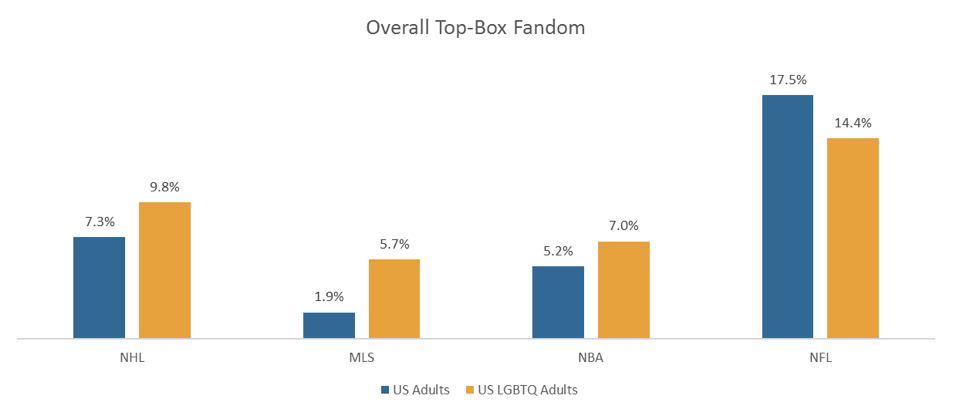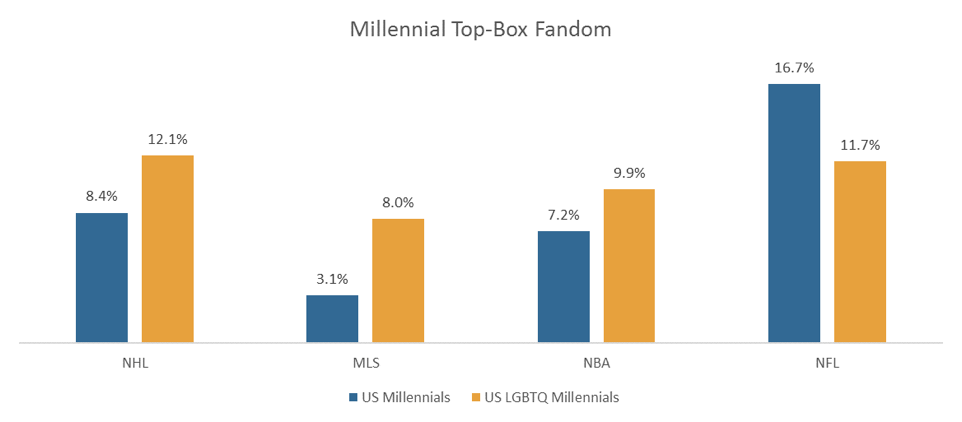The Gist: Major League Soccer (MLS) and the NHL, two leagues that have voiced public support for their LGBTQ players and the You Can Play Project, have seen considerable boosts in support with the LGBTQ community in recent years.
There’s been a fairly consistent narrative over the first few weeks of the NFL season, and it’s had very little to do with the game. It’s mostly been about player activism, and whether the league and owners should do anything to silence players, and how much it has potentially been impacting their ratings.
In other words, the narrative has been mostly negative.
Should players be allowed to do it? Should the NFL embrace it or distance themselves from it? And, given that the NFL is a business, perhaps most importantly for their bottom line: how does the league bring back the people that it has supposedly lost due to players voicing their concerns about the state of this thing or that in the U.S.?
So, I thought it might be worth looking into activism in sports in general. Is it just the cause in the NFL that is making waves? Or is activism in sports, in general, a bad thing?
As a hockey fan, the first thing that came to mind is the You Can Play project. Formed in 2012 after the tragic death of LGBTQ activist Brendan Burke — son of longtime NHL GM Brian Burke — You Can Play is an organization that works to fight against homophobia. The name is derived from a fairly simple mantra: “If you can play, you can play,” regardless of your gender, race, sexual orientation, or anything else. The movement is about acceptance in sports, which is still a touchy subject in some of the major sports leagues.
The NHL was, quite obviously, the first league to publicly adopt and support the You Can Play project, helping to launch the organization’s first initiative in 2012. The following year, the MLS became the second major sports league to partner with the organization. So far, that’s it. While individual teams or players from teams have partnered with the organization (the Denver Nuggets of the NBA, for example), those are the only two American sports leagues to publicly partner with the organization.
How has it impacted their fandom? Take a look.
And, among the Millennial audience (which is the most valuable for advertisers), the numbers look even better.
Let me preface the following with this: I hate writing these types of blog posts. It feels cynical to just talk about public support of LGBTQ rights from a business or revenue generation perspective. The concept of LGBTQ acceptance and rights is one that is far more important than just how it can potentially impact a sports league’s ratings.
Having said that: look at those charts. The two organizations on the left have publicly supported and partnered with the You Can Play project, and have gotten huge returns on support from the LGBTQ community. The third, the NBA, may not be a partner of the project, but has also had its fair share of positive reinforcement with the LGBTQ community in the past few years.
Jason Collins publicly came out in 2013 while still playing in the NBA, and received public support from players and the organizations in the league. Rick Welts, now President of the 2x NBA Champion Golden State Warriors, came out in 2011 while working for the Suns. Last year, after the introduction of the HB2 Bill in North Carolina (widely viewed as transphobic), Adam Silver and the NBA moved the All-Star Weekend from Charlotte to New Orleans, using the league’s economic power to voice dissatisfaction with the law and show solidarity with the LGBTQ community.
Is it any coincidence that these leagues have seen considerable boosts in support with the LGBTQ audience in recent years?
Compare that with the massive under-index among LGBTQ adults and Millennials with the NFL, where the first openly gay athlete, Michael Sam, dropped considerably in the NFL draft and whose decision to come out was met with considerable hand wringing from NFL executive and sports pundits alike. Sam’s sexuality was not embraced, but instead was a potential “distraction” for whatever team might have him.
Activism in sports is a touchy subject, and one that clearly can have wildly different views depending on what issue, specifically, is being discussed. But on the issue of LGBTQ rights and support, the numbers don’t lie.
Publicly embracing these issues has not negatively impacted any of those leagues that have done so, and has only helped to open the game up to an audience that may not have previously embraced it (an audience that may comprise 7% of the US population, which we will detail in our upcoming report).
I hate to make it about the bottom line, but if that’s what gets more leagues to embrace these issues, that’s fine with me.










